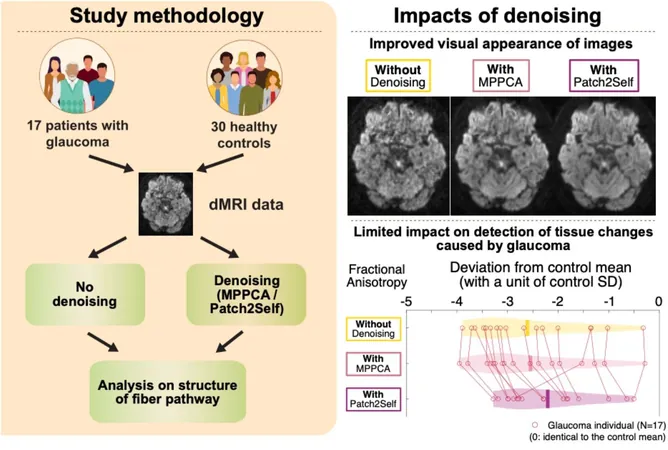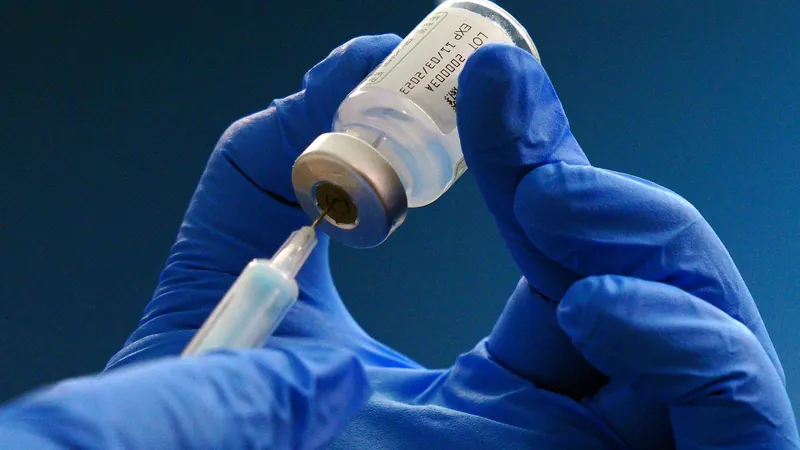
Unlocking the Secrets of the Brain: How Denoising MRI is Changing Glaucoma Detection
2025-08-06
Author: Ming
For decades, MRI (magnetic resonance imaging) has been a game-changer in unveiling the intricate workings of the human brain. A breakthrough variant, diffusion-weighted MRI (dMRI), dives even deeper by measuring the movement of water molecules, effectively mapping the brain's fiber pathways. This remarkable technology is especially vital for assessing neurological changes associated with various disorders.
Yet, despite its advantages, dMRI data is often plagued by 'noise'—a disruptive interference that can cloud the detection of crucial biological signals. In response to this challenge, numerous 'denoising' algorithms have emerged, designed to cleanse dMRI data of this noise. Now, researchers at the National Institute of Physiological Sciences are set to reveal just how effective these denoising techniques really are, especially in the context of glaucoma.
A Closer Look at Denoising's Efficacy
"We wanted to see for ourselves if the available denoising methods truly enhance empirical data," stated Daiki Taguma, the study's lead author. The team embarked on an ambitious study using brain scans from both healthy individuals and glaucoma patients, leveraging dMRI's established ability to spot abnormalities in the optic tract related to glaucoma.
What they discovered was intriguing: while denoising did enhance the visual quality of dMRI images and significantly improved the signal-to-noise ratio, its effectiveness in distinguishing between healthy individuals and glaucoma patients was surprisingly limited.
The Implications of Their Findings
This research suggests that while denoising can refine dMRI data to some extent, it doesn't fundamentally alter the detection of disease-related changes in fiber pathways. The study emphasizes that the advantages of current denoising methods are highly context-dependent, raising important questions about their application in clinical practice.
These findings represent a significant leap forward in optimizing dMRI usage in both medical and research arenas. By honing in on what really works, scientists can better exploit dMRI's capabilities, accelerating our understanding of how diseases influence brain fiber pathways.
The groundbreaking study, titled "Evaluating the impact of denoising diffusion MRI data on tractometry metrics of optic tract abnormalities in glaucoma," was published on July 16. This collaborative effort also included contributions from Dr. Shumpei Ogawa of the Jikei University School of Medicine and Professor Hiromasa Takemura from the National Institute for Physiological Sciences.





 Brasil (PT)
Brasil (PT)
 Canada (EN)
Canada (EN)
 Chile (ES)
Chile (ES)
 Česko (CS)
Česko (CS)
 대한민국 (KO)
대한민국 (KO)
 España (ES)
España (ES)
 France (FR)
France (FR)
 Hong Kong (EN)
Hong Kong (EN)
 Italia (IT)
Italia (IT)
 日本 (JA)
日本 (JA)
 Magyarország (HU)
Magyarország (HU)
 Norge (NO)
Norge (NO)
 Polska (PL)
Polska (PL)
 Schweiz (DE)
Schweiz (DE)
 Singapore (EN)
Singapore (EN)
 Sverige (SV)
Sverige (SV)
 Suomi (FI)
Suomi (FI)
 Türkiye (TR)
Türkiye (TR)
 الإمارات العربية المتحدة (AR)
الإمارات العربية المتحدة (AR)